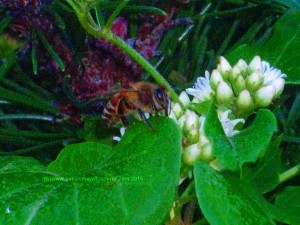History of Bees
Bee History
 We are in the dog days of summer and many summer flowers are the stopping off place for many insects that also enjoy the summer flowers. Bees are looking for pollen and nectar that help maintain and build their hives over the winter. Honeybees are one of the first animals that were domesticated by man. Honey and beeswax have long been a sought after products by man. These little workhorses are good at turning pollen and nectar into a food fit for Kings and the wax was used for many things. It does not go bad without refrigeration and stays good for some time. It was also fermented to make mead a drink talked about in ancient times used by Vikings and Roman Gods. The wax used as a preservative and a source for light.
We are in the dog days of summer and many summer flowers are the stopping off place for many insects that also enjoy the summer flowers. Bees are looking for pollen and nectar that help maintain and build their hives over the winter. Honeybees are one of the first animals that were domesticated by man. Honey and beeswax have long been a sought after products by man. These little workhorses are good at turning pollen and nectar into a food fit for Kings and the wax was used for many things. It does not go bad without refrigeration and stays good for some time. It was also fermented to make mead a drink talked about in ancient times used by Vikings and Roman Gods. The wax used as a preservative and a source for light.
The honeybee is not native to North America and was brought to the colonies along with other English livestock to help settle the United States. They were difficult to bring over onboard ships but once here they established and were foraging ahead of the colonization of America. As agriculture grew and we moved west honeybees went also giving homesteaders food and sugar to use to survive the stark and bleak farm homesteads.
There is a law of supply and demand that at about a radius of 4 miles is what a bee can travel and bring pollen back to hive. The forage out in this radius and bring back the best pollen and nectar that can be gotten in the shortest time but the easiest to harvest. If you live on the outer region of this radius bees may be at your flowers one day and somewhere else the next. It is wise to grow several types of flowers that bloom at different times ensuring a constant supply of pollen and nectar.
Honey bees are under attack for many reasons, but planting many types of flowers where they can get pollen and nectar to make honey and beeswax to live through the winter will help. The horticultural crops that they pollinate in spring and early summer have long gone and now they need more summer and fall flowers a must to sustain their health and the health of the hive.
©Ken Wilson & Gardening Whisperer 2015
This entry was posted in Horticulture Tips, Insects and tagged Honey, Horticulture tips, Native, Pollen on September 12, 2015, by Ken Wilson. Edit
